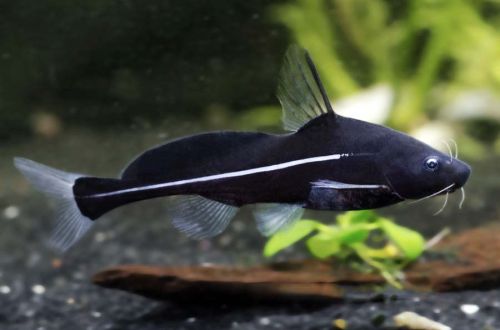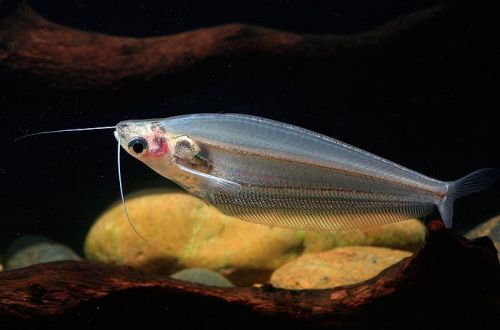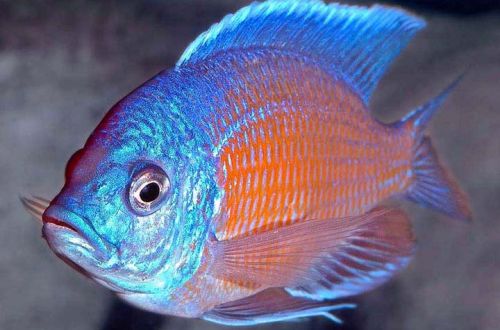
Spear catfish
Catfish “Black Lancer” or Catfish spearman, scientific name Bagrichthys macracanthus, belongs to the family Bagridae (Killer whale catfish). Lanser (lanser) translated from Norwegian means “spear”, indicating the peculiarity of the structure of the dorsal fin. The fish is unpretentious and easy to keep, but it has a difficult disposition and requires a careful choice of neighbors in the aquarium.

Contents
Habitat
Comes from Southeast Asia. Initially, it was believed that the natural habitat covers the Indochina peninsula, the islands of Sumatra (Kalimantan) and Java. However, according to recent studies, this species is considered to be endemic to Sumatra. Inhabits the main channels of rivers, preferring areas with silty substrates and many shelters in the form of snags and thickets of coastal plants.
Brief information:
- The volume of the aquarium – from 250 liters.
- Temperature – 24-28°C
- Value pH — 5.5–7.0
- Water hardness – 1–21 dGH
- Substrate type – any
- Lighting – subdued
- Brackish water – no
- Water movement – little or no
- The size of the fish is 20–23 cm.
- Food – any sinking food
- Temperament – conditionally peaceful
- Keeping in a group of one male and several females
Description
A close relative of the White-whiskered catfish that lives in the Mekong and Chao Phraya rivers in Indochina. When the island of Sumatra was part of the peninsula, these catfish were one species, but after separation, while in isolation, the Sumatran catfish acquired new features: they became larger, and a white stripe appeared on the body along the lateral line.
Adult individuals reach a length of up to 23 cm. The color is black, the fins and tail are translucent gray. Sexual dimorphism is weakly expressed, there are no significant visible differences between males and females. The structure of the dorsal fin, high and raised almost vertically, is reflected in the name of this species – “spearman”.
Food
An omnivorous species, they eat everything they find at the bottom. The daily diet can consist of sinking dry foods (flakes, pellets) or frozen, live foods such as brine shrimp, bloodworms, daphnia, etc.
Maintenance and care, arrangement of the aquarium
The optimal size of the aquarium for a group of 3-4 fish starts from 250 liters. A secretive nocturnal lifestyle implies the presence of shelters that are formed either from natural material (bogwood driftwood, aquatic plants, etc.) or use ordinary decorative objects (sunken castles, ships, etc.). Due to the peculiarities of behavior, each catfish should have its own secluded place in order to avoid possible intraspecific conflicts.
The successful maintenance of Black Lancer catfish depends on many factors, one of the most important is the composition and quality of the water. The main task is to maintain the hydrochemical composition and temperature within acceptable ranges and prevent the accumulation of organic waste. The guarantee of clean water will be regular cleaning / cleaning of the aquarium and the placement of the necessary equipment, in particular the filtration system.
Behavior and Compatibility
Not a very friendly species, it competes with congeners and other benthic species for territory. It is desirable to keep in a group consisting of one male and several females. Compatible with other non-aggressive species of comparable size living in the water column or near the surface.
Breeding / breeding
At the time of writing, no successful cases of breeding in captivity have been recorded. In nature, the breeding season is associated with alternating wet and dry periods. With the advent of the monsoon rains, fish move to the flooded coastal rainforest to spawn.
Fish diseases
Being in favorable conditions is rarely accompanied by a deterioration in the health of fish. The occurrence of a particular disease will indicate problems in the content: dirty water, poor quality food, injuries, etc. As a rule, eliminating the cause leads to recovery, however, sometimes you will have to take medication. Read more about symptoms and treatments in the Aquarium Fish Diseases section.





